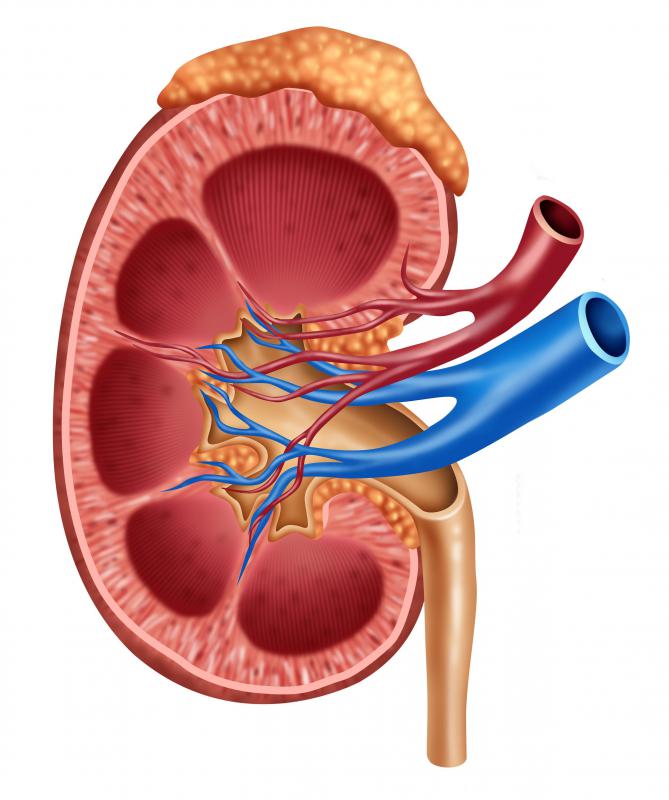At WiseGEEK, we're committed to delivering accurate, trustworthy information. Our expert-authored content is rigorously fact-checked and sourced from credible authorities. Discover how we uphold the highest standards in providing you with reliable knowledge.
What is Hypoadrenalism?
Hypoadrenalism is a medical condition that results from impaired adrenal gland function. Also known as adrenal insufficiency, impaired adrenal function can cause insufficient hormone production that may jeopardize one's life if left untreated. Individuals with hypoadrenalism generally receive hormone replacement therapy to re-establish hormonal balance.
The adrenal glands are part of the body’s endocrine system, which serves to regulate metabolic function. Positioned over each kidney, the two adrenal glands help regulate hormone production and distribution throughout the body. Each possesses two distinct sections, the cortex and the medulla, to aid with cortisol and adrenaline production respectively. The cortex section is responsible for the regulation of several functions, including blood pressure, immune system stability and metabolism.

Primary adrenal insufficiency, or Addison’s disease, occurs when cortex function is compromised. Autoimmune disease, metastasized cancers and widespread infection that directly threaten adrenal function can contribute to a decrease in cortisol production triggering the onset of Addison symptoms. Hypoadrenalism may also originate with pituitary gland malfunction contributing to a condition referred to as ACTH deficiency. The acronym ACTH stands for adrenocorticotropic hormone, which is produced by the pituitary gland to initiate hormone production by the adrenal cortex.

Hypoadrenalism may be diagnosed following a comprehensive consultation with a physician and the administration of a battery of diagnostic tests to rule out other conditions. Cortisol levels are generally measured and evaluated with blood tests. Sodium, potassium and blood glucose levels may also be assessed intermittently to indirectly measure cortisol levels. Irregular or inadequate cortisol readings are generally indicative of this condition. Imaging tests may also be performed to evaluate the condition of the adrenal and pituitary glands.

Individuals with hypoadrenalism will often experience a gradual onset of signs and symptoms. A decrease in the body's sodium levels can cause some people to suddenly desire foods and beverages high in salt. Aside from becoming easily fatigued, individuals may also experience widespread joint discomfort, mood swings, and persistent nausea. Dizziness and fainting spells are not uncommon in some people with adrenal insufficiency. As hormone levels become increasingly unstable, symptoms may significantly worsen, potassium levels can rise and blood pressure may drop.

An acute drop in blood pressure for someone with impaired adrenal gland function is indicative of a complication known as an Addisonian crisis. Individuals with this life-threatening complication require emergency medical care to stabilize their condition. Critically low potassium and blood glucose levels necessitate the immediate intravenous administration of saline and sugar. Additional fluids and nutrients must also be administered to prevent dehydration.

Hormone replacement is the main objective of any treatment approach for this condition. In order to compensate for unstable corticosteroid levels, hydrocortisone may initially be given in an effort to stabilize cortisol levels. Additional oral corticosteroidal medications, such as prednisone, may be also be prescribed. Placement on a synthetic, corticosteroidal regimen does necessitate regular monitoring due to the risk for potential side effects, including hypertension and osteoporosis.
AS FEATURED ON:
AS FEATURED ON:

















Discuss this Article
Post your comments